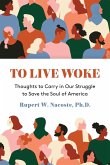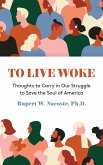This study of the 1870 and 1890 Ghost Dance movements among North American Indians offers an innovative theory about why these movements arose when they did. Emphasizing the demographic situation of American Indians prior to the movements, Professor Thornton argues that the Ghost Dances were deliberate efforts to accomplish a demographic revitalization of American Indians following their virtual collapse. By joining the movements, he contends, tribes sought to assure survival by increasing their numbers through returning the dead to life. Thornton supports this thesis empirically by closely examining the historical context of the two movements and by assessing tribal participation in them, revealing particularly how population size and decline influenced participation among and within American Indian tribes. He also considers American Indian population change after the Ghost Dance periods and shows that participation in the movements actually did lead the way to a demographic recovery for certain tribes. This occurred, Thornton argues, not, of course, by returning dead American Indians to life, but by creating enhanced tribal solidarity. This solidarity enabled participating tribes to maintain their membership at a historical point when American Indians were socially and biologically 'migrating' away from tribal populations. As well as being of intrinsic interest, Thornton's findings have broad implications for the study of revitalization and other social movements. They are particularly important with regard to the circumstances fostering social movements and the rational basis of social movement participation.
Table of contents:
Preface; Acknowledgments; 1. The 1870 and 1890 Ghost Dance movements; 2. Prior scholarship on the Ghost Dance movements; 3. Hypothesis of demographic revitalization; 4. Depopulation and the Ghost Dance movements; 5. Ghost Dance participation and depopulation; 6. Participation and population recovery; 7. A summary, a conclusion, some implications; Technical appendixes; References; Index.
Table of contents:
Preface; Acknowledgments; 1. The 1870 and 1890 Ghost Dance movements; 2. Prior scholarship on the Ghost Dance movements; 3. Hypothesis of demographic revitalization; 4. Depopulation and the Ghost Dance movements; 5. Ghost Dance participation and depopulation; 6. Participation and population recovery; 7. A summary, a conclusion, some implications; Technical appendixes; References; Index.








